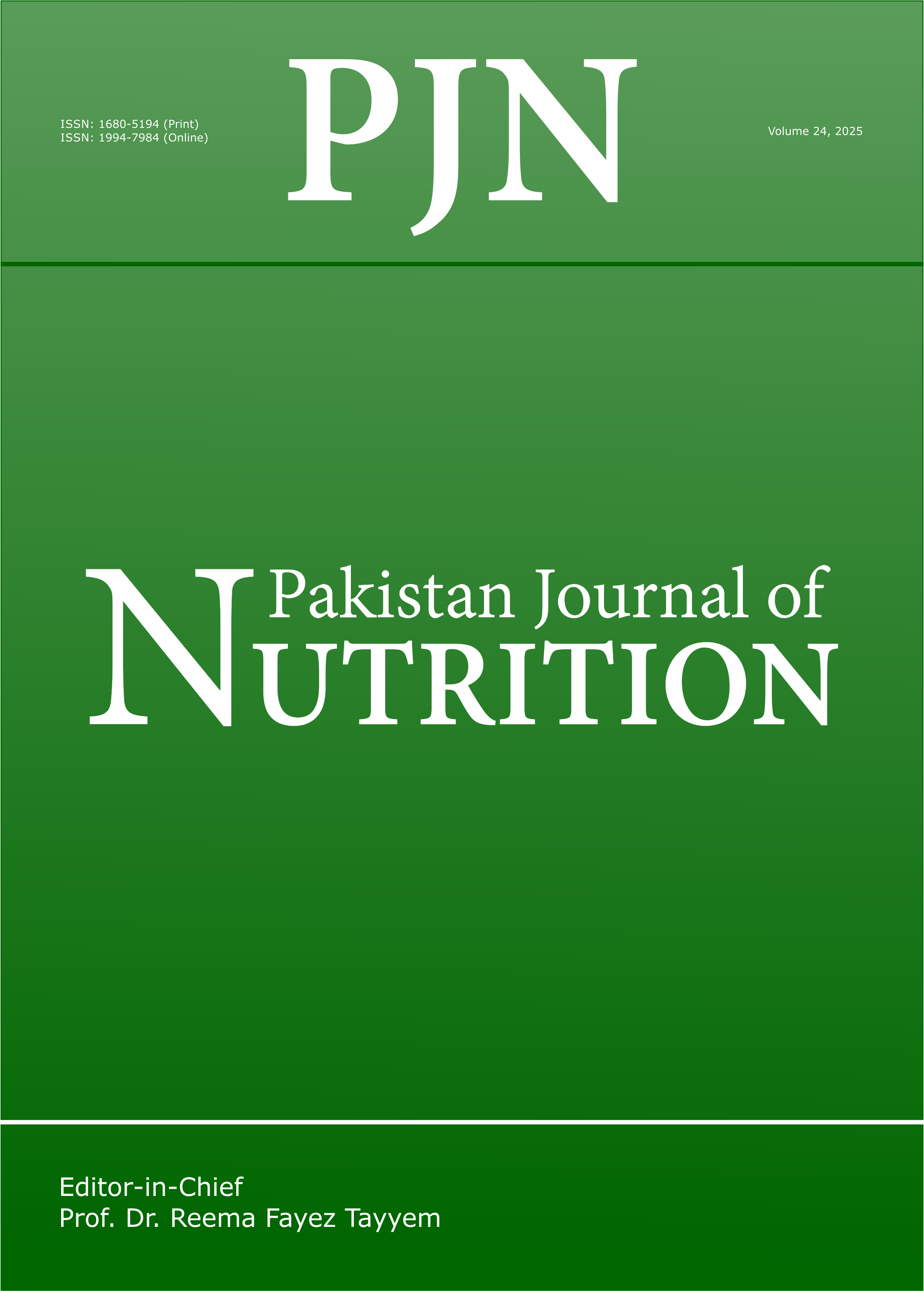Rumen Metabolities of Bovine Fed Cassava Peels in a Humid Tropical Environment
DOI:
https://doi.org/10.3923/pjn.2009.172.175Keywords:
Bovine and cassava peels, fulani bulls, rumen metabolitesAbstract
Twelve young white Fulani bulls with average live weight of 97kg and age 40 weeks were used to determine rumen metabolites of bovine feed cassava peel in a 3 x 4 factional treatment for a complete randomized design experiment. Three diets containing increasing percentage of cassava peels (0, 20 and 40 percent) in sun-dried form were offered ad-libitum to the experimental animals. Feed intake and body weight changes were measured. Samples of rumen liquor was taken through a rumen tube using a vacuum pump at 0, 0.5, 1.5 and 2.5h after feeding. The pH, total volatile fatty acid, rumen ammonia-nitrogen and osmolality were determined. The average daily intake of total dry matter was highest in diet T2 (20%) on the 10 day of feeding. However treatment had no significant effect (p > 0.05) on mean average daily intake level. When their average daily intake was adjusted to their respective metabolic body weights (Kg BW0.075) those on diet T1 (control) had almost the same value with T2 and T3, respectively. Inclusion level had no significant effect (p > 0.05) on rumen pH, and osmolality. Mean NH3-N was statistically the same (p > 0.05). However correlation coefficient between time and NH3-N was positive in diet T2. (p < 0.05) Concentration of total VFA in rumen fluid increased for all level of cassava peel inclusion and was affected by time after feeding (p < 0.05) with highest value occurring at 1.5h inclusion level of cassava peel. At 40% level of inclusion caused a decrease in rumen NH3-N concentration when sampled at 1.5h. Knowledge of pH and osmolality may benefit the animal through improvement of acid base status. Inclusion of cassava peels in the diet of cattle up to 20% or slightly above 30% is recommended since it gave better NH3-N accumulation in the rumen after ingestion.
Downloads
Published
Issue
Section
License
Copyright (c) 2009 Asian Network for Scientific Information

This work is licensed under a Creative Commons Attribution 4.0 International License.
This is an open access article distributed under the terms of the Creative Commons Attribution License, which permits unrestricted use, distribution and reproduction in any medium, provided the original author and source are credited.

